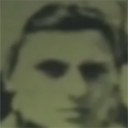0125 Between Memory and Oblivion of the Shoah. The Problem of Aesthetic Neutralization of the Past in Saul Friedländer's Historical Thinking
Identifiers (Article)
Identifiers (Files)
Abstract
In his writings, Saul Friedländer described the problem of individual memory of the Shoah as one of the main limits of discourse. The critical point of his reflection on memory can be found in the issue of social redemptive thinking, which constituted a defence reaction against catastrophe. This phenomenon was particularly distinct in the public form of memory, which, on the one hand, demanded simplicity and clear interpretation, since its role was to neutralise incoherence, eliminate the pain, and raise hope among the contemporaries; on the other hand, the deep individual memory of the survivors – which knows no rules – did not accept the forms of public memory, even though it could defy them. According to Friedländer, the expansion of public memory and the decline of individual memory suggest that "the memory of the Shoah will probably not escape complete ritualization."1He also argued that art cannot oppose the process of coming to terms with the horror, because it needs to express the individual memory of the past in certain empty forms. What became equally problematic was the fact that the categories of art after the Holocaust have been taken over by cultural industry and politics, which instrumentally used the issue of memory for other purposes. Referring to Friedländer's reflections on the present impasse related to the neutralising mechanisms of memory, I shall consider the issue of the limits and possibilities of creating an aesthetic link between the past and the present.
Statistics


License

This work is licensed under a Creative Commons Attribution-NonCommercial-NoDerivatives 4.0 International License.



